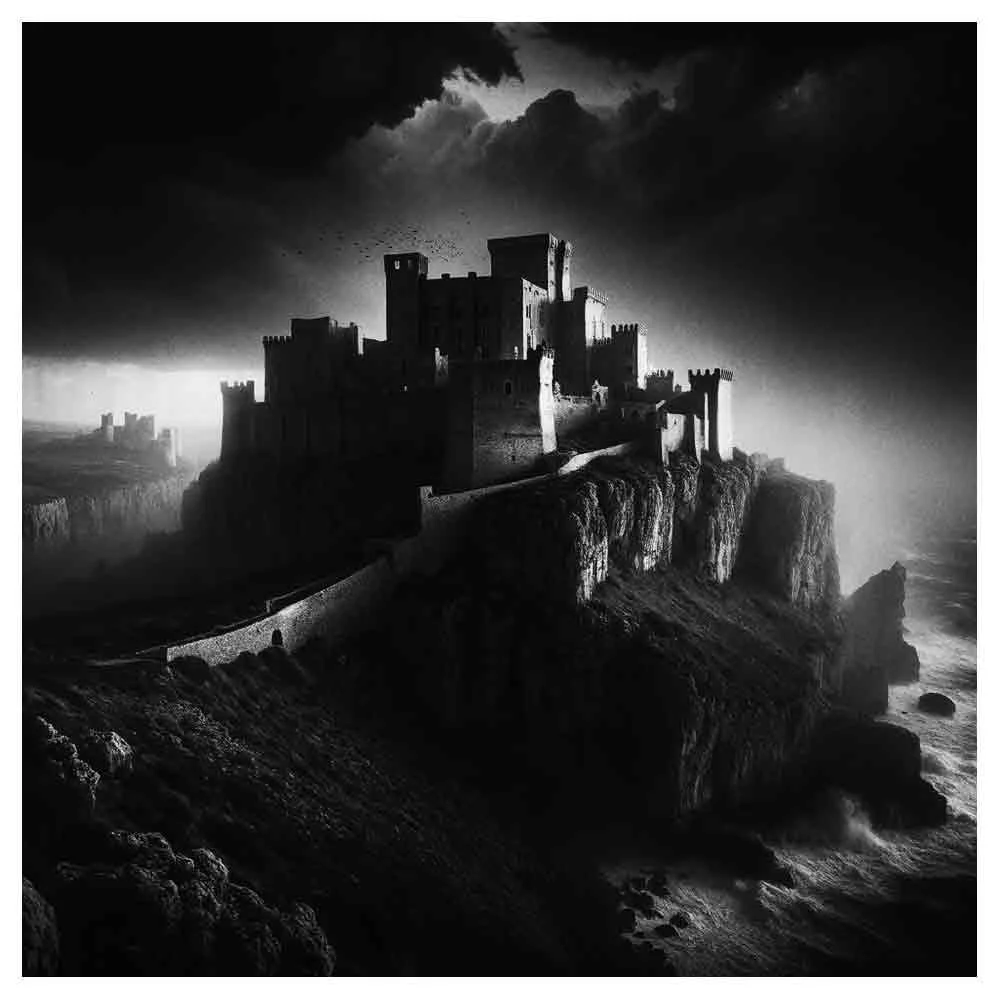What Is A Screenplay And How To Write One?
A screenplay is the backbone of any movie or TV show, serving as the blueprint for a visual story that can captivate audiences and evoke powerful emotions. If you've ever wondered how your favorite films or series come to life, it all starts with the screenplay.
This comprehensive blog post will delve into screenwriting, discussing the essential aspects of a screenplay, the writing process, and how you can create one yourself.
Let's dive in!
What is A Screenplay?
A screenplay, a script, is a written work that details the story, characters, dialogue, and action of a movie, TV show, or other audio-visual presentation. Screenplays, including scene headings, character names, action lines, and dialogue, are often written in a specific format.
The screenplay format ensures that the entire production crew can easily read and understand the finished script, from the director to the actors.
What does a screenplay include?
A screenplay typically consists of the following basic elements:
Scene Headings: Also known as slug lines indicate each scene's location and time of day. Scene headings are written in all caps and include information such as "INT." for interior or "EXT." for exterior, followed by the specific location and time of day (e.g., DAY or NIGHT).
Character Names: Written in all caps, these introduce the characters in the scene and are usually centered on the page.
Action Lines: These describe the action in the scene and are written in the present tense. Action lines provide important details about the characters' actions, their interactions with their environment, and any relevant visual cues.
Dialogue: The lines spoken by the characters. Dialogue is written directly beneath the character's name and is typically indented on both sides of the page.
Parentheticals: These are brief descriptions or directions placed in parentheses directly below a character's name, before their dialogue. Parentheticals provide additional information about how the character speaks or behaves, such as their tone of voice or facial expressions.
Transitions: Words or phrases (e.g., CUT TO:, DISSOLVE TO:) that indicate a change in time, location, or the pacing of the story. Transitions are typically written in all caps and aligned to the right side of the page.
What is The Best Screenwriting Software?
While writing a screenplay using a standard word processor is possible, using specialized screenwriting software is much easier.
These tools, such as Final Draft, Celtx, or Fade In, are designed to help you format your screenplay correctly and efficiently while providing helpful features like scene organization, character development, and script revisions.
How To Write A Screenplay?
1. Develop Your Concept
Before you can start writing your screenplay, you need a solid idea of your story. This may be an original idea or an adaptation of an existing story, such as a novel or short story. Take the time to flesh out your concept, considering elements like the setting, main characters, and the overarching theme or message.
2. Create Your Characters
Characters are the heart and soul of any story. Develop compelling, multi-dimensional characters to drive your narrative forward and resonate with your audience. Consider their motivations, backstories, and how they change over the course of the story. Remember that well-developed characters will make writing dialogue and action lines much easier.
3. Outline Your Story
Outlining your story helps you organize your thoughts and ensures a solid narrative structure. Break down your story into acts, and further divide those acts into sequences and scenes.
Outlining can be as simple or detailed as you prefer, but it should provide a clear roadmap for your screenplay.
Before writing the script, this process helps you identify potential plot holes, pacing issues, or character inconsistencies.
4. Write Your Screenplay
With your outline, it's time to start writing your screenplay. Follow the proper screenplay format, and use the elements discussed earlier to create a visually engaging and easy-to-read script. Remember to:
Write in the present tense.
Keep action lines clear and concise.
Allow your characters' voices to shine through in the dialogue.
Maintain a consistent tone and pacing throughout the script.
Don't worry about making your first draft perfect – the most important thing is to write your story down on paper. You can refine and polish your screenplay through subsequent drafts.
5. Revise and Edit
Once you've completed your first draft, take a break and distance yourself from the script briefly. When you return to revise and edit, this will give you a fresh perspective. During the revision process, pay attention to:
Character development and consistency
Dialogue that feels natural and engaging
Plot holes or inconsistencies
Pacing and scene transitions
Don't be afraid to make significant changes, cut scenes, or rewrite sections of your screenplay. The goal is to create the best possible version of your story.
Tips for Writing a Captivating Screenplay
Show, Don't Tell: In screenwriting, it's crucial to convey information visually whenever possible. Instead of relying on dialogue to explain a character's emotions or backstory, use action lines and visual cues to show the audience what's happening.
Create Strong, Memorable Scenes: Each scene should serve a purpose and push the story forward. Ensure your scenes are engaging and well-structured, with clear objectives, conflict, and resolution.
Write Realistic Dialogue: Good dialogue should feel natural and reveal character while driving the story forward. Avoid unnecessary exposition and make sure each character has a distinct voice.
Embrace Conflict: Conflict is the engine that drives any story. Incorporate conflict into your screenplay, from internal struggles within your characters to external obstacles and opposition.
Study Successful Screenplays: Read screenplays from movies and TV shows you admire. Analyze their structure, pacing, and character development to learn from the best.
By following these guidelines and incorporating the essential elements of a screenplay, you'll be well on your way to creating a captivating and memorable script.
With practice, patience, and perseverance, you can master the art of screenwriting and bring your stories to life on the big screen.
Frequently Asked Questions About Screenplays (FAQs)
What is a screenplay?
A screenplay, or script, is a written work that outlines the story, characters, dialogue, and action for a movie, TV show, or other audio-visual presentation. It serves as the blueprint for the entire production, guiding the director, actors, and crew throughout the filmmaking process.
What are the basic elements of a screenplay?
The basic elements of a screenplay include scene headings, character names, action lines, dialogue, parentheticals, and transitions.
What is the difference between a movie script and a stage play?
A movie script or screenplay is written for motion pictures or television shows and focuses on visual storytelling. In contrast, a stage play is written for live theatrical performances and often places more emphasis on dialogue and character interactions.
What is the proper screenplay format?
The proper screenplay format includes specific guidelines for scene headings, character names, action lines, dialogue, and other elements. This format ensures the entire production crew can easily read and understand the script.
What is a spec script?
A spec script, short for "speculative screenplay," is written without a commission or guaranteed production. Screenwriters often write spec scripts to showcase their talent and creativity in hopes of attracting the attention of producers or production companies.
What is a shooting script?
A shooting script is a version of the screenplay used during production. It includes additional information, such as camera angles, shot descriptions, and technical details, to guide the director, cinematographer, and crew during filming.
What is screenwriting software, and why is it important?
Screenwriting software, such as Final Draft, Celtx, or Fade In, is designed to help writers format their screenplays correctly and efficiently.
These tools provide helpful features like scene organization, character development, and script revisions, making it easier for screenwriters to focus on crafting their stories.
What is the difference between a screenplay for a feature film and a television show?
A feature film screenplay typically tells a complete story within a single script, while a television show screenplay is often part of a series, with each script representing an episode or segment of the larger story. TV screenplays may also include act breaks to accommodate commercial breaks.
Can screenplays be written for other forms of media, like video games or documentaries?
Screenplays can be adapted for various media, including video games and documentaries. While the basic elements and formatting may remain similar, the content and structure of these screenplays will be tailored to fit the specific needs and requirements of the medium.
How can I learn to write a screenplay?
To learn how to write a screenplay, study successful screenplays, read books on screenwriting, take classes or workshops, and practice writing your own scripts. Familiarize yourself with the screenplay format, develop your storytelling skills, and be open to feedback and revisions.
What are scene headings, and why are they important?
Scene headings, also known as slug lines, indicate the location and time of day for each scene in a screenplay. They are crucial for setting the context and helping the production crew understand where and when the action occurs.
How do I write dialogue for my screenplay?
To write dialogue, create realistic and engaging conversations that reveal character and move the story forward. Ensure each character has a distinct voice, and avoid unnecessary exposition or overly formal language.
What are the action lines in a screenplay?
Action lines describe a scene's actions, movements, and visual elements. They help convey the story visually and provide important details about how characters interact with their environment and each other.
How can I ensure my screenplay has the correct formatting?
Screenwriting software is the most efficient way to ensure correct formatting, as these tools automatically apply standard screenplay format.
Alternatively, you can use a screenplay template or study sample screenplays to familiarize yourself with the proper format.
What is the role of sound effects in a screenplay?
Sound effects can enhance the storytelling in a screenplay by creating an atmosphere, conveying emotions, or indicating actions that may not be visible on screen. They should be used sparingly and only when necessary to support the story.
How long should a screenplay be?
The length of a screenplay varies depending on the type of project. The general rule for feature films is one page per minute of screen time, resulting in screenplays typically ranging from 90 to 120 pages.
Television scripts are usually shorter, with a 30-minute episode ranging from 25 to 35 pages and a 60-minute episode ranging from 45 to 60.
How do I protect my screenplay from being stolen?
To protect your screenplay, consider registering it with a copyright office or a reputable script registration service, such as the Writers Guild of America.
Keep records of your drafts, revisions, and correspondence related to your screenplay, and avoid sharing it with untrustworthy individuals or entities.
How do I submit my screenplay to a production company or a script competition?
When submitting your screenplay, follow the submission guidelines provided by the production company or competition.
This may include submitting your script in a specific format, including a title page with your contact information, or providing a logline or synopsis. Ensure your screenplay is polished and free of errors before submitting.
What is the difference between a screenplay and a script for a documentary?
While both types of scripts involve visual storytelling, a documentary script often focuses more on factual information, interviews, and real-life events. The structure and content of a documentary script will be tailored to fit the specific needs and requirements of the documentary format.






























